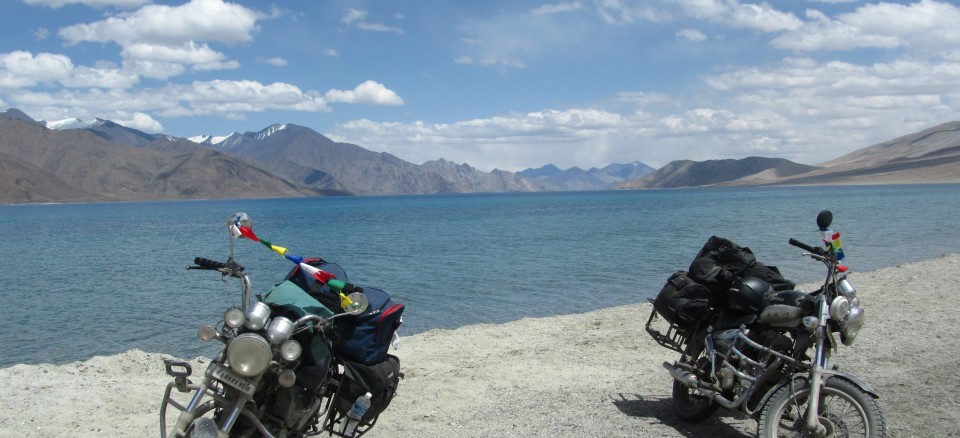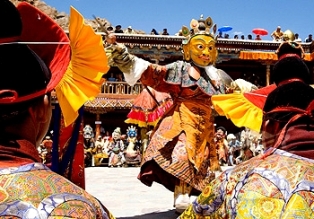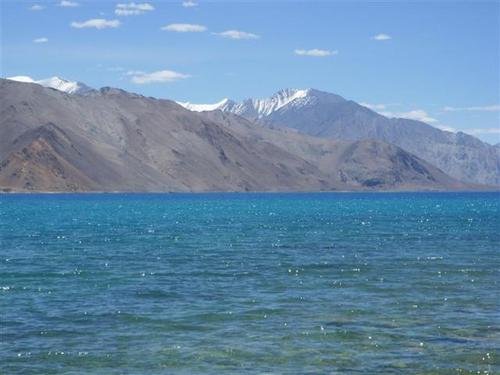Leh
Ladakh

Leh - Ladakh are two amazing place of visit
especia6lly during the onset of summers.
This mountainous region has exemplary beauty of the landscape and holidays here could be like being cut
off from an entire civilization.

Leh is the capital city of Ladakh, while Ladakh is the plateau and
the valley lying close to the Greater Himalayas. There are several ways by how
you can reach there but depends on the route that would be open. Srinagar and Manali are two major gateways
to Leh Ladakh. A part of the Himalayan
kingdom, Leh lies in the district of Jammuand Kashmir. A hamlet of small wooden huts to keep off the cold winds, Leh
has a great market for tourists. There are trekking opportunities to Ladakh and
excursions to Shimla and other
places in Himachal Pradesh. The
place is connected to Srinagar from
the northwestern part.
In the
furthest far flung corner of northern India, in Ladakh near the Indus Valley,
lies the town of Leh at 3,505 meters (11,500 feet) above sea level. This remote
place has become a popular tourist destination since Ladakh was opened to
foreigners in 1974. It's the most beautiful and most common entry point to the
Ladakh region.

Bounded by
two of the world's largest mountain ranges and surrounded by alpine desert,
Leh's dry barren landscape full of historic Buddhist monasteries makes it an
incredible sight to behold. This Leh travel guide will help you plan your trip.
Flights to Leh operate regularly from
Delhi. Flights are also available to Leh from Srinagar and Jammu.
Alternatively, the roads to Leh are open for a few months of the year, when the
snow has melted. The Manali Leh Highway is open from around June to October
each year, and the road from Srinagar to Leh is open from June to November.
Bus, jeep, and taxi services are all available. The trip takes around 2 days
because of the difficult nature of the terrain. If you have the time and are in
good health, do travel by road as the scenery is amazing.

The best
time to visit Leh is between May and September, when the weather is the
warmest. Ladakh doesn't experience rain like elsewhere in India, so the monsoon
season is the perfect time to travel to Leh.
Leh’s Buddhist monasteries and historical monuments are the
biggest draw for visitors. The most imposing of these is the Shanti Stupa, located just outside the
town. In the heart of the town, on top of a steep mountain, the 800 year old Kali Mandir houses a fascinating
collection of masks. You can stop to spin a huge prayer wheel on your way
there. The 17th century Leh Palace, built in traditional Tibetan style, offers
a captivating view of town. South of Leh, ThikseyMonastery is the place for seeing amazing sunsets. The Hemis Gompa is the wealthiest, oldest, and most important monastery
in Ladakh.
Nature and
adventure lovers will find excellent hiking and para gliding opportunities
around Leh. There are also many longer trekking trails to choose from, such as
the ones from Likir to Temisgam, and Markha Valley from Spituk. Mountain
climbing trips can be booked to peaks such as Stok (20,177 feet), Goleb (19,356
feet), Kangyatse (20,997 feet) and Matho West (19,520) in the Zanskar
Mountains.

White water rafting is also possible in July and August along the
Indus River in the Leh area, as well as the Shayok River in the Nubra Valley,
and Zanskar River in Zanskar.

The Ladakh
Festival is held during the first two weeks of September. It opens in Leh with
a spectacular procession through the streets.

Villagers dressed in traditional
costumes dance and sing folk songs, backed by an orchestra. The festival also
features musical concerts, dances performed by masked lamas from selected
monasteries, and mock traditional marriage ceremonies. The two day Hemis
Festival takes place in June/July at the Hemis Gompa to commemorate birth of
Guru Padmasambhava, who founded Tantric Buddhism in Tibet.

There's traditional
music, colorful masked dances, and a fair full of beautiful handicrafts.
One of the
most spectacular side trips possible from Leh is a journey along the Zanskar
River. You’ll see hanging glaciers, green villages, Buddhist monasteries, and
huge Himalayan peaks. The Nubra Valley, on Khardung La, the world’s highest
motorable road, is another
unforgettable trip.

It's a
restricted area that requires permission to be obtained from the District
Magistrate’s Office in Leh, but its well worth the effort. As well sights of
Himalayan icicles, wild yaks and horses, and hairy double humped camels, you’ll
be rewarded with water, mountains, and desert all in the one area.
Make sure
you allow yourself plenty of time to acclimatize after arriving in Leh because
of altitude sickness. Avoid doing anything for the first couple of days and
drink plenty of water. Laptops also don’t appreciate the high altitude and hard
drives are known to crash. Nights still get chilly during the summer so do
bring warm clothes to layer.

Leaving Leh by flight can be a lot more
challenging than arriving. Demand for flights is high in peak season, so book
well in advance. In addition, flights are sometimes canceled because of weather
conditions, so it’s advisable not to book the last flight of the day.


